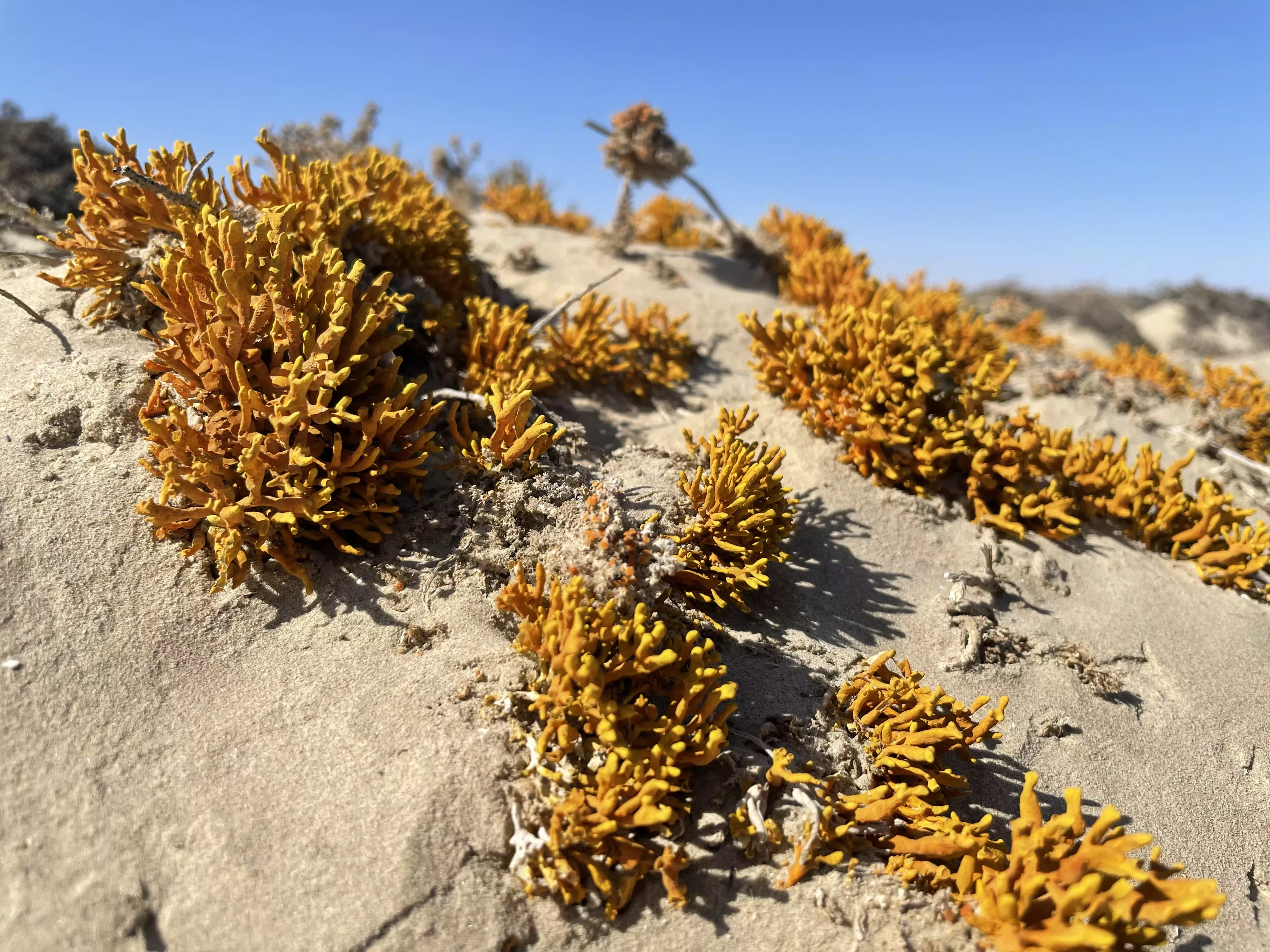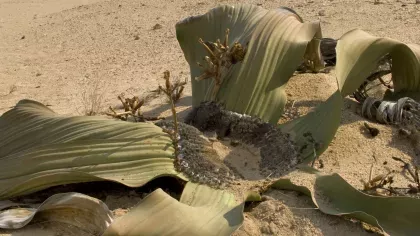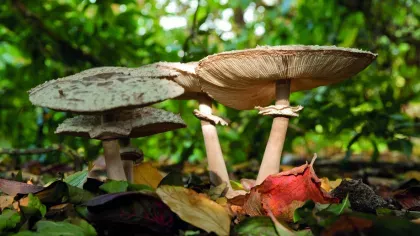7 March 2023
The lichen that invented sunscreen
In a fight against the might of a star, a little-appreciated lifeform has developed a unique way to stay safe from the sun.

The desert flats of Namibia run to the horizon in every direction. At the driest points of the year, this landscape is a furnace of cracked Earth with no shade to be seen.
No trees, little water other than what arrives on ephemeral fog.
Picture the lifeform that has mastered this landscape. To survive in such a place requires unique specialisation and unparalleled toughness. Is what you imagine a tiny, bright orange lichen?
It takes two to survive in such harsh conditions, and a lichen is a pairing up to the job. All lichens are a partnership between a fungus and either green algae or cyanobacteria (or sometimes both). Typically, the fungus provides the “body” or thallus of the lichen using its hyphae, and in return for a place to live, the algal-partner shares carbohydrates created by photosynthesis.
But even if you can withstand the temperature extremes of 40oC to freezing, and hoard just enough water to get by, how do withstand the UV threat of permanent exposure to a blistering sun? If we can find out, what can we learn from it?
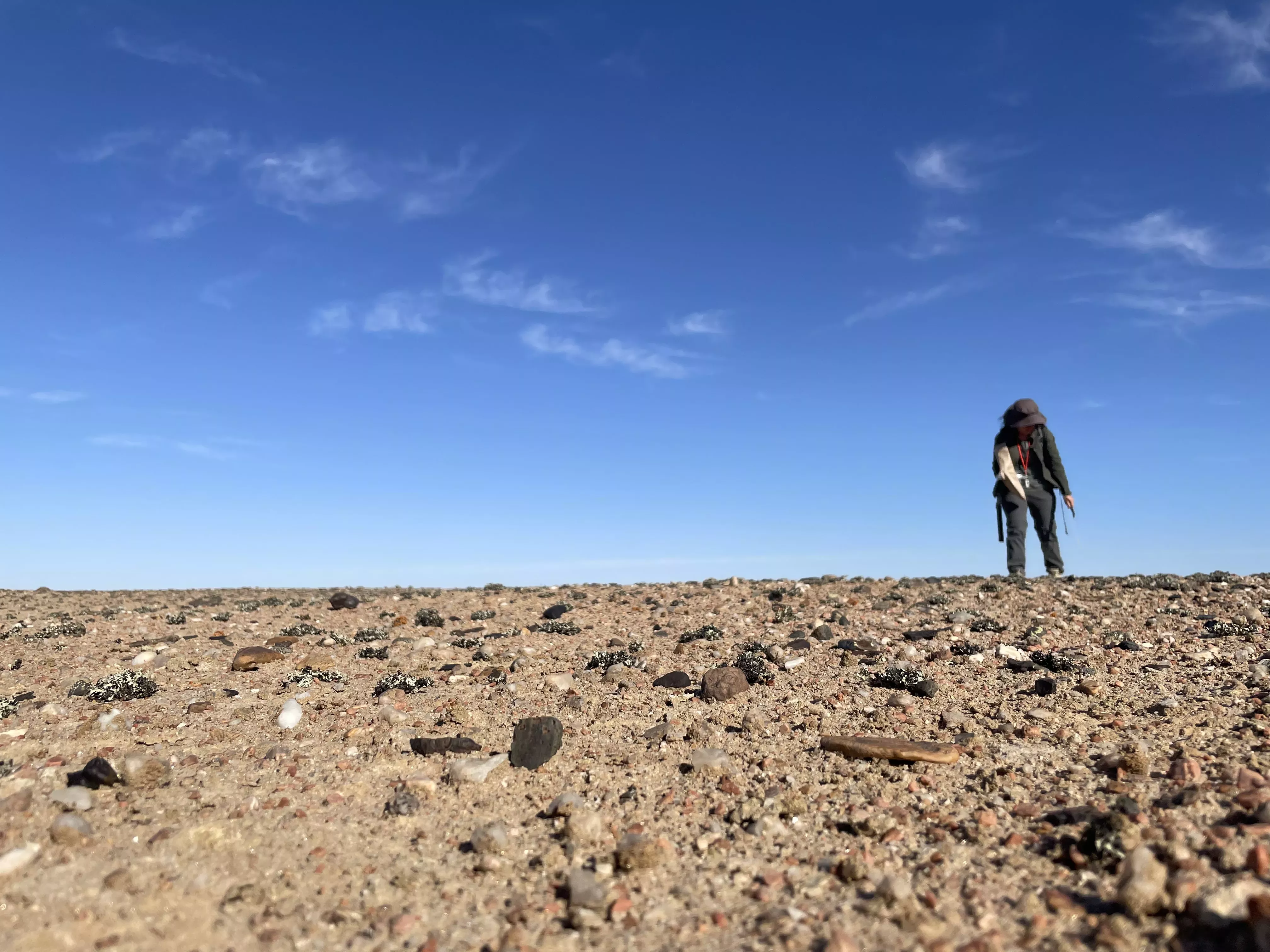
Adventure in the Namib
June 2022. PhD student Theo Llewellyn is at the heart of the Namib Desert, part of a seven-strong joint expedition between Kew and the National Botanical Research Institute of Namibia, to study the highly endemic plants and fungi living there.
“Fields” of orange lichens belonging to the family Teloschistaceae are the prize find. Each measure no more than a few centimetres in height, some forming a surface barely a few millimetres thick on the rocks they grow on. It seems that switching to growing on rocks rather than trees at some point 65+ million years ago allowed this particular group of lichens to spread and diversify around the world.
The research team slather on sun cream to protect themselves from the sun. The lichens, without access to a bottle of Factor 50, must fend for themselves.
Their protection is what gives them their unique orange hue. The fungal partner produces chemical compounds called ‘anthraquinones’ in such sheer quantities that they crystallize upon the upper layers of the lichen’s thallus. The crystal lattice absorbs and reflects UV radiation, shielding the symbiotic pair from the sun’s damaging effect on DNA.
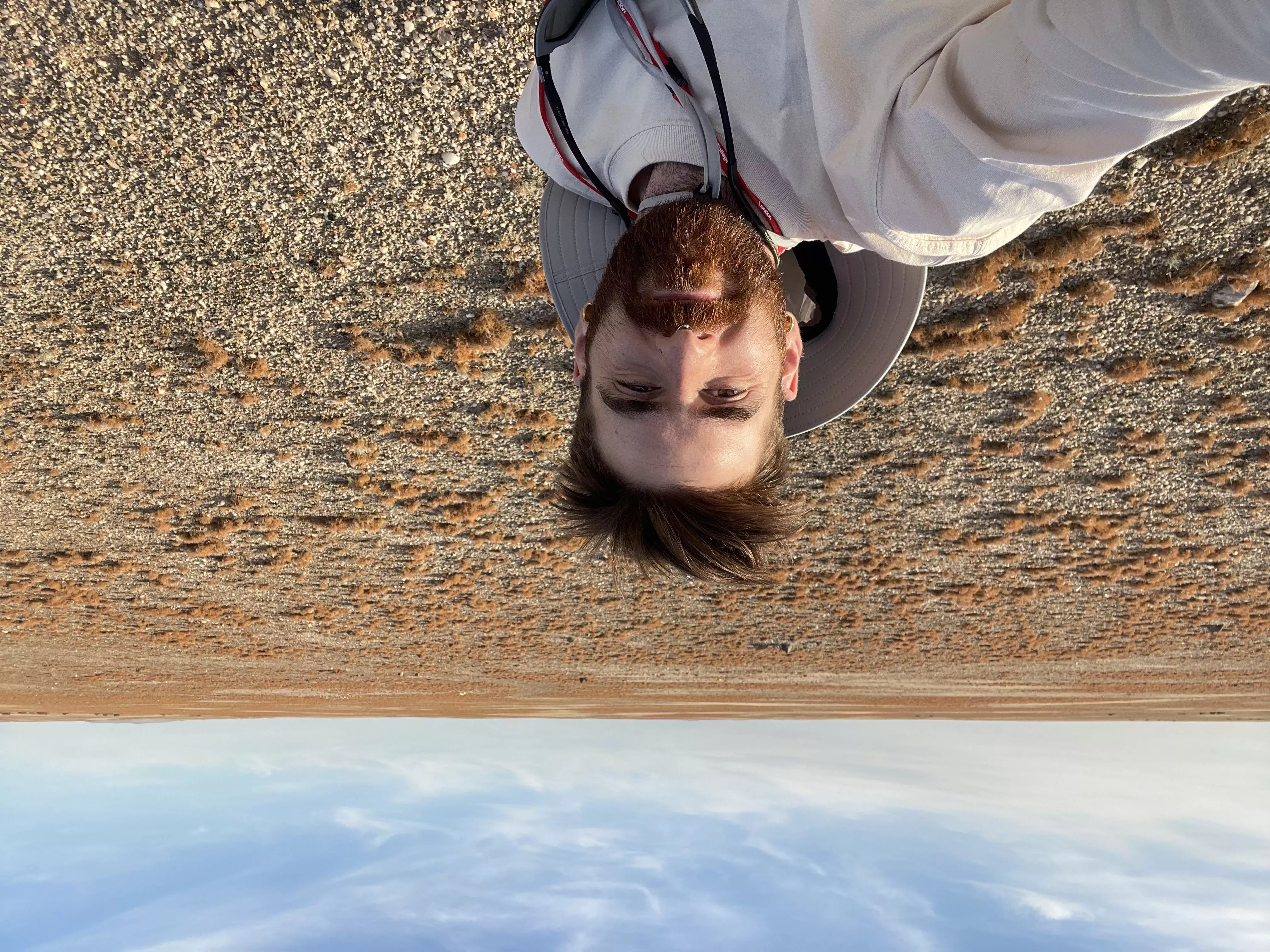
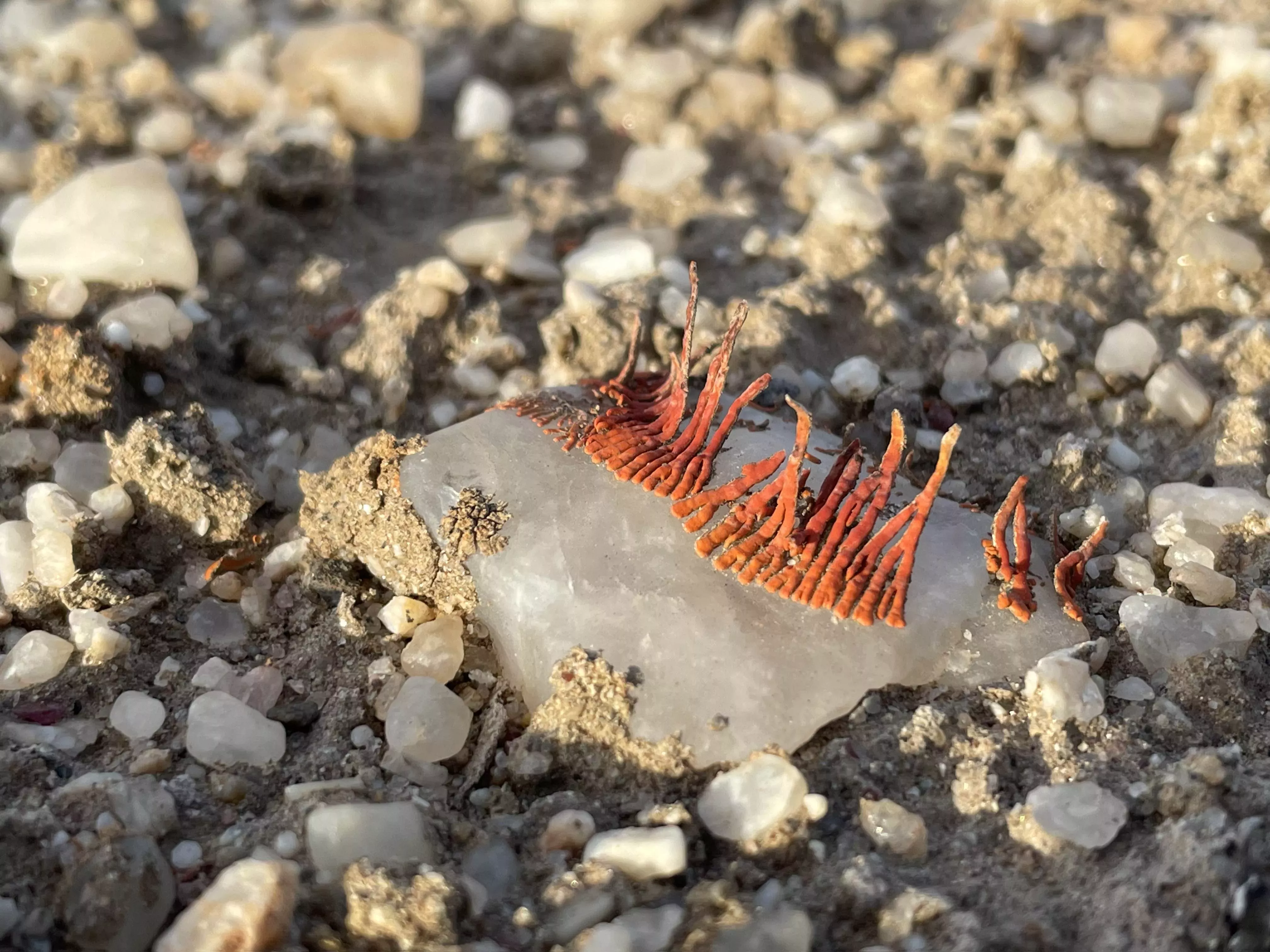
Exposing DNA
Knowing how the lichen protects itself from the sun is not enough. The properties of this Namibian lichen are seen in other sun-exposed lichen species across the world. We need to know how this defence evolved.
Returning to the Kew lab, Theo, alongside supervisor and Senior Mycology Research Leader, Dr Ester Gaya, set to work finding the genes responsible.
When sequencing a fungus’ genome you would normally seek to grow it in isolation, without any DNA contaminants making your work more difficult. Getting a lichen fungus to grow without the presence of its partner is challenging though; the answer lies in sequencing everything together.
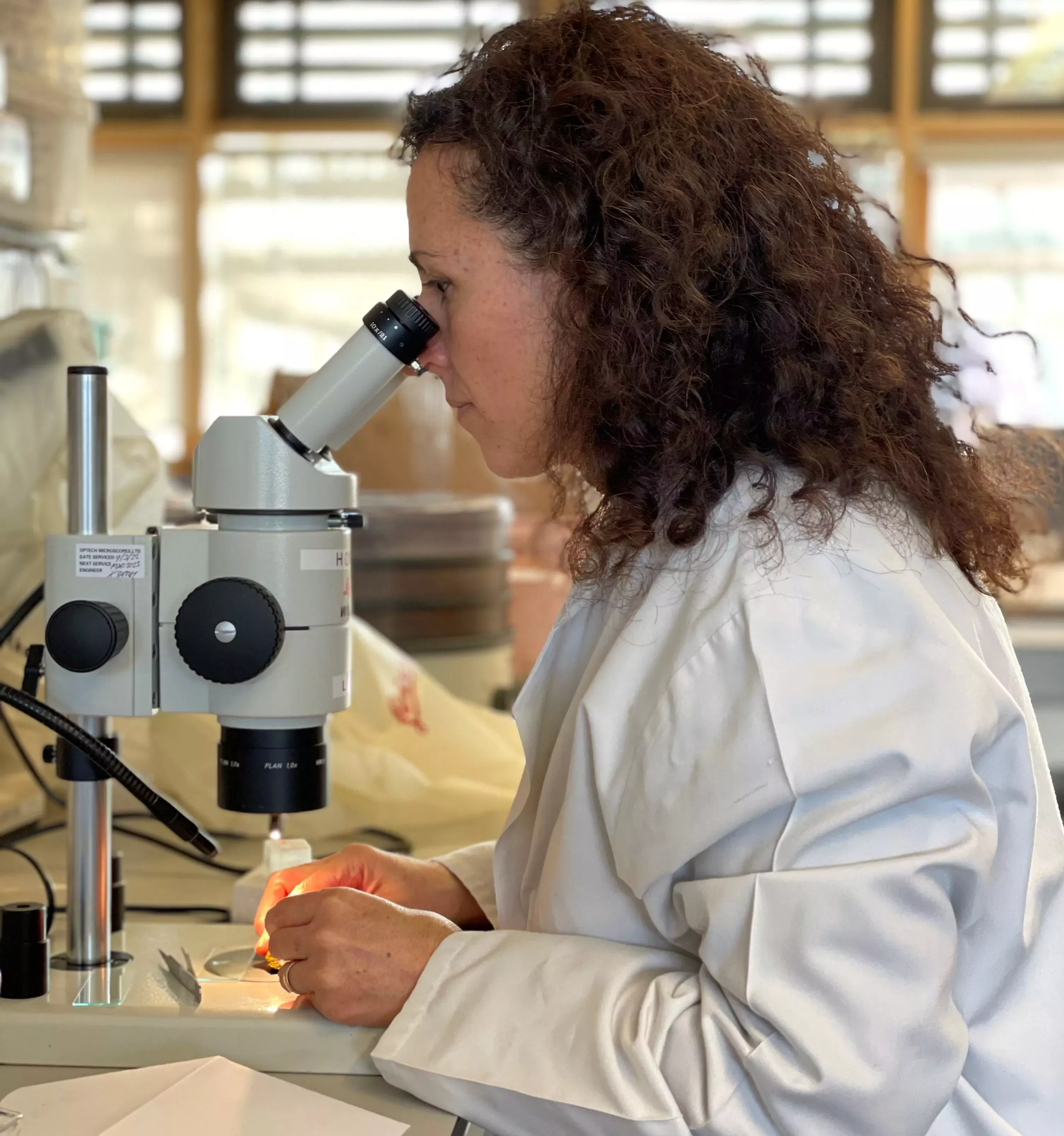
By mashing up part of a lichen and sending it through the sequencing process, you end up with a mass of genetic data from both algal and fungal partner, as well as from the bacteria and other microbes making their home amongst the lichen’s cells.
Thankfully, separating them is easy thanks to recent advances in bioinformatics, the field of biology of using computers to analyse biological data.
DNA is made of two base pairs (A & T, C & G) and different organisms, conveniently, have different ratios of these within their genomes (referred to as the G-C Content). By calculating the G-C content of each DNA sequence in the mix and comparing the sequences to huge DNA databases, it was possible to match each piece of sequenced DNA to one of the three major partners that make up a lichen: fungus, alga and bacterial community.
The outcome is a multicoloured graph like the one below, which allows a detailed study of each lichen partner’s DNA individually, without having to grow them separately.
In this study, twenty-four lichens never-before sequenced have been made known by this method. By comparing these species to sequences from other fungi, the cluster of genes responsible for crystal suncream creation has been identified.
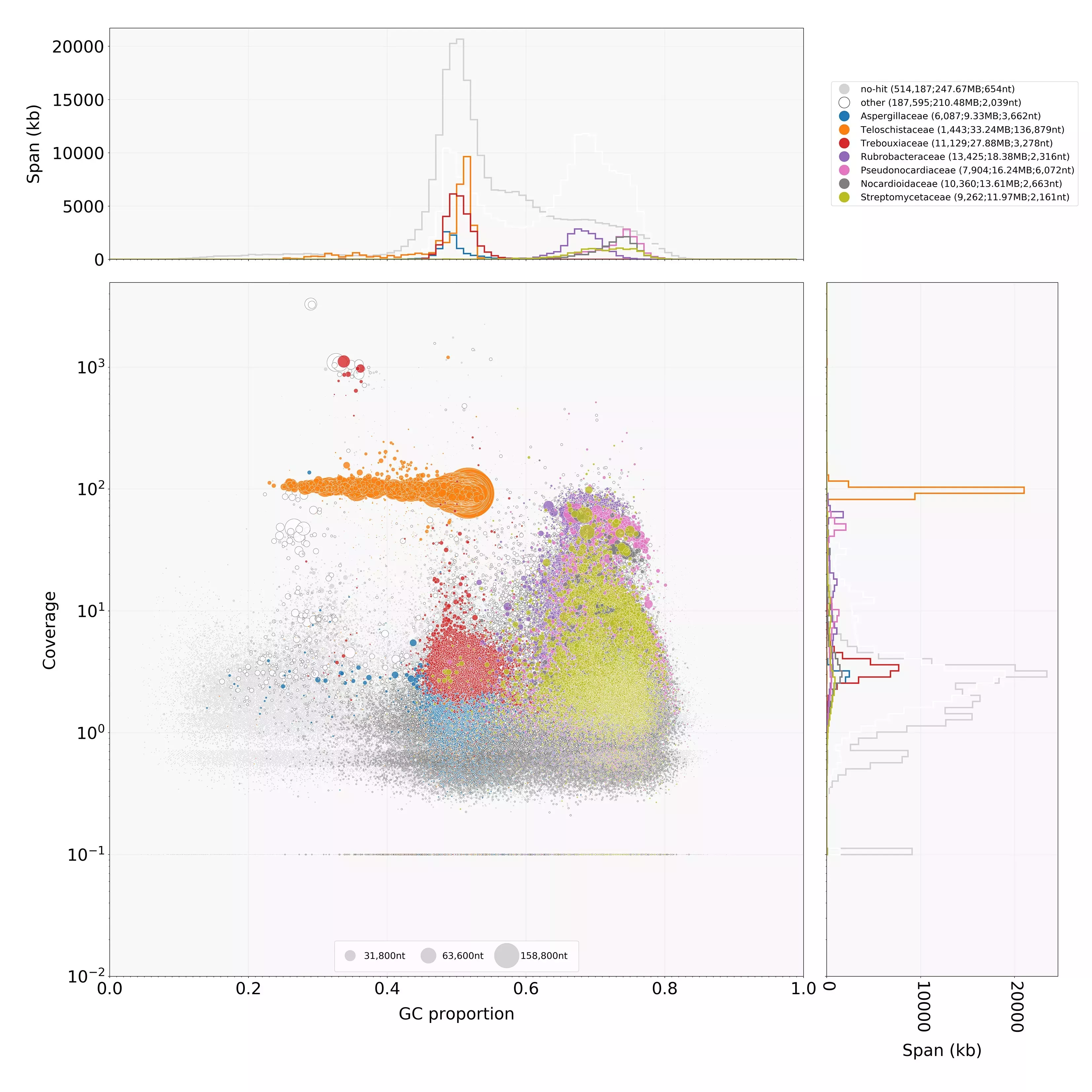
Sunblock at a toxic cost
The twist in the tale is that the genes responsible for creating the sunscreen compounds are nothing new. They’re seen in other species of lichen and fungi that produce the compounds in far lower quantities, hinting that they may have extra properties beyond UV protection.
The reason for production in such low quantities is likely to be that anthraquinones are highly toxic, able to interfere with DNA in the cell and stop it working properly. So how does the lichen manage?
In a second major discovery, the team found located next to the main genes responsible for compound creation, a gene coding for a transport protein that immediately removes newly created anthraquinones from the fungal cell, preventing toxic build-up, and allowing the creation of the crystal mass.
It is this unique adaptation that has allowed the lichen to develop a life-saving solution from a poisonous resource.
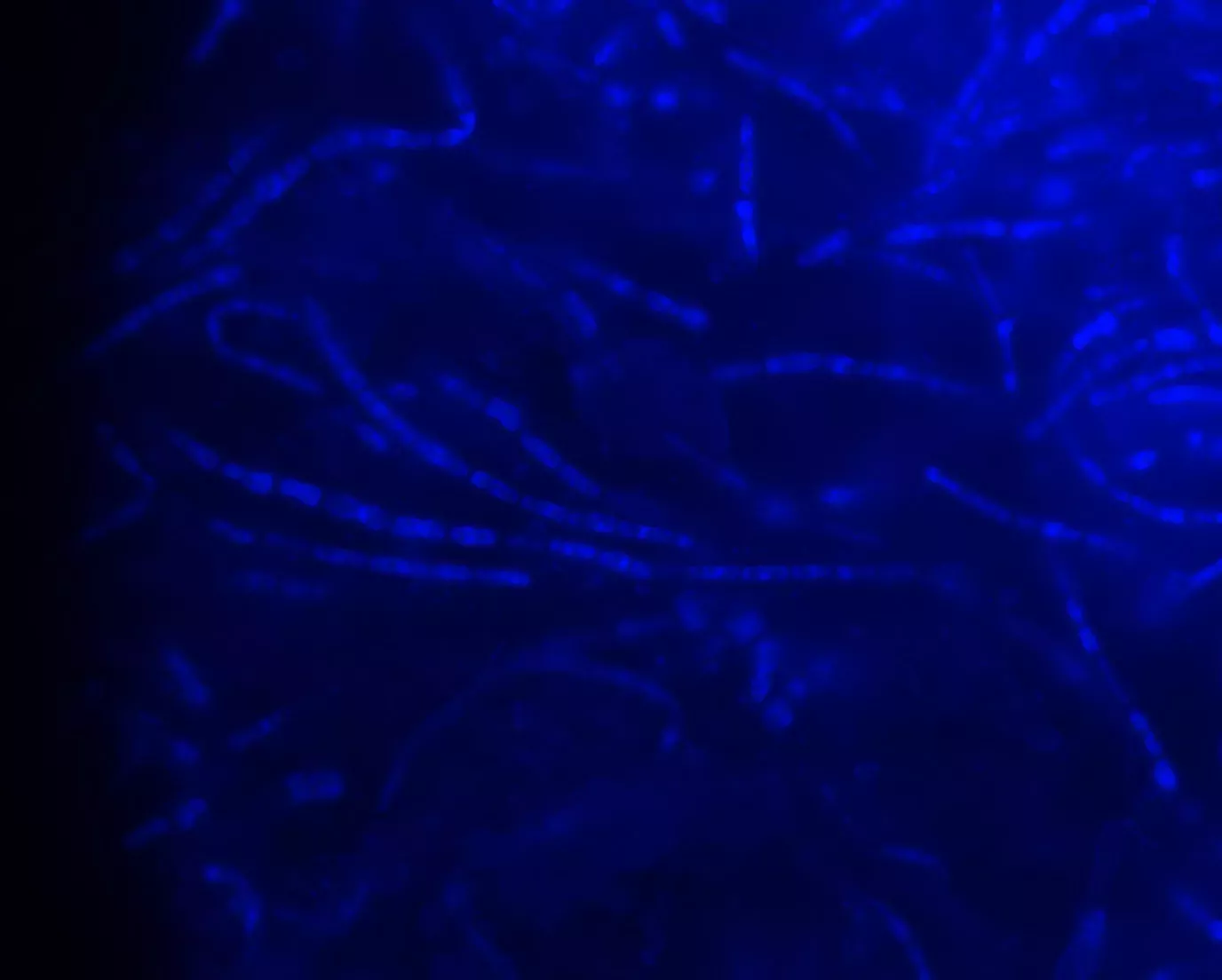
A Factor 50+ Future
Extreme ecosystems may appear barren to our human eyes, but as we learn more about them, they are turning out to be home to the most unique collections of life on Earth.
These ecosystems are also those most effected by our changing climate. Wildlife adapted to exploit a tight range of extreme conditions may be hardy, but shift that balance even slightly and things can quickly collapse.
Research like this study means that we can understand exactly how the unique organisms of these ecosystems go about their survival, and enact measures to protect them, before they’re lost to time.
This is significant not just for the future of lichens who form the bedrock of these ecosystems, but for our own future as well.
The properties of these lichen’s compounds, both sun-blocking and DNA-binding, may have huge applications in everything from healthcare through to proofing the future against climate change. But, such opportunities can only be made reality if the real inventor – the lichen – is still around on Earth to tell us how.
Theo Llewellyn, Dr Ester Gaya, and researchers here at Kew will continue their deep study of lichens into the years ahead.



